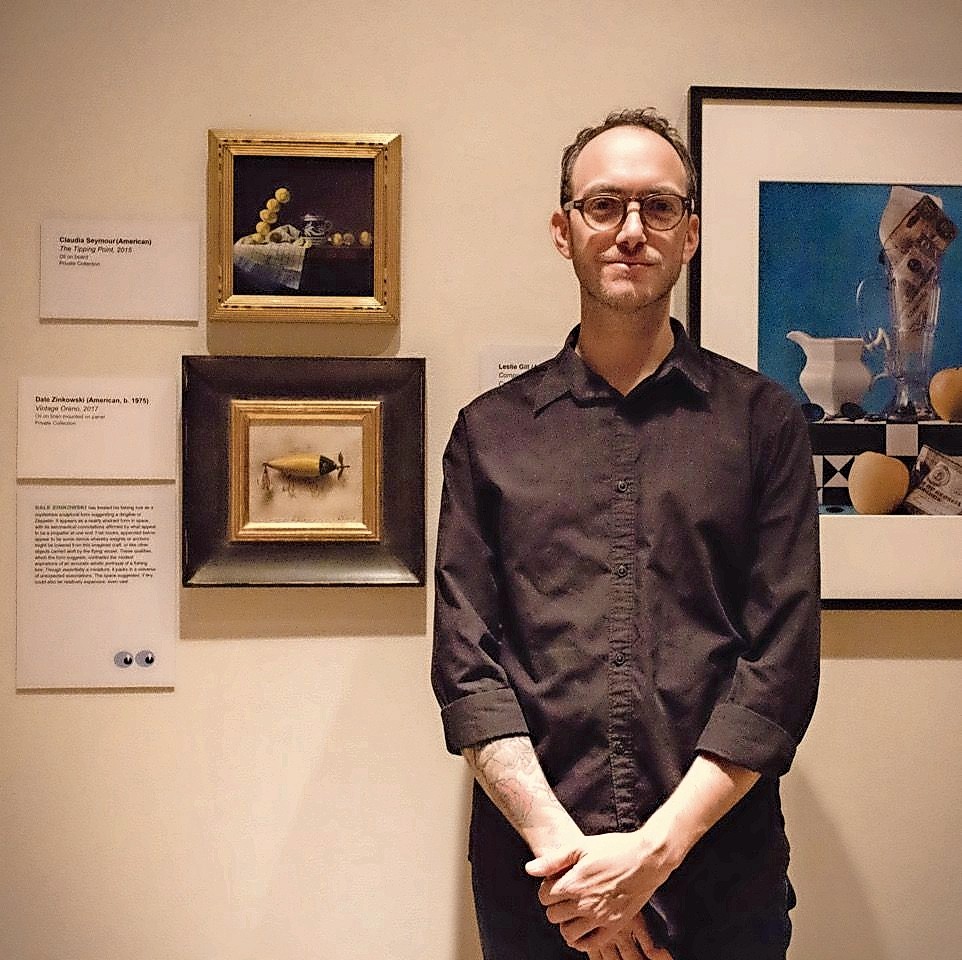Sea Cliff artist’s work included in museum show

While gathering pieces to include in the “Fool the Eye” exhibit now on display at the Nassau County Museum of Art, guest curators Franklin Hill Perrell and Debbie Wells wanted to include traditional and contemporary works of trompe l’oeil, which uses meticulously crafted images to create optical illusions.
The exhibit, which opened Nov. 18, features work by acclaimed artists Judith Leiber, Roy Lichtenstein, Vik Muniz and Salvador Dali — as well as Sea Cliff’s own Dale Zinkowski.
Wells said that Zinkowski’s painting “Vintage Oreno” demonstrated a more traditional vein of trompe l’oeil, which is why it was selected for inclusion in the exhibit.
“His painting is a great addition to the more standard trompe l’oeil concept,” she said. “We believed it would be a good tool to introduce people to the concept of the show.”
Zinkowski, who is originally from West Islip, has lived in Sea Cliff for four years. He said this is one of the first shows in which his work has been featured where he no longer owns the painting on display — a private collector acquired “Vintage Oreno” in 2016.
“I was actually informed from the collector that the painting had been selected, which was very exciting,” he said. “But it’s almost like an out-of-body experience to see a painting that you said goodbye to and then revisit. It’s really interesting.”
Zinkowksi studied at the School of Visual Arts and the Florence Academy of Arts in Italy. He said he was drawn to the technique of trompe l’oeil simply because it’s “fun to do.”
“It’s kind of a specialized form of still-life painting where you keep the depth of field very shallow so things appear to be coming off a flat surface that appears to actually be there,” he said. “You’re really trying to trick people to see these illusions, and take [them] into another space. It forces them to really get into it and discern what they’re looking at.”
“Vintage Oreno” depicts an old fishing lure that he acquired from the depths of e-Bay. He said he finds value in restoring meaning to items that were previously forgotten about.
“I like to paint old things that had once meant something to somebody, and give it a new life in the painting,” he said. “There’s a story [there] that I don’t even know, so I can almost make a new narrative for the piece, and now people are looking at this object in a new form.”
Zinkowski said that what sets “Fool the Eye” apart from other exhibits is that the traditional and the contemporary “live in the same space.”
“There’s just something for everyone in a show like that. It attracts a bigger audience, but it also never gets stale,” he said. “If you see too much of one thing, it’s hard to pique your interest.”
Wells agreed that the concept works for people of all ages, and that visitors would be able to appreciate the “illusions and whimsy” inherent in the exhibit. “It offers visitors a challenge to figure out what’s real versus what may be an illusion,” she said.
The exhibit will be on display in the Saltzman Fine Art Building through March. Zinkowski will meet with visitors in the galleries on March 4 to answer questions about his work and the mysteries behind trompe l’oeil.

 47.0°,
Fair
47.0°,
Fair 





